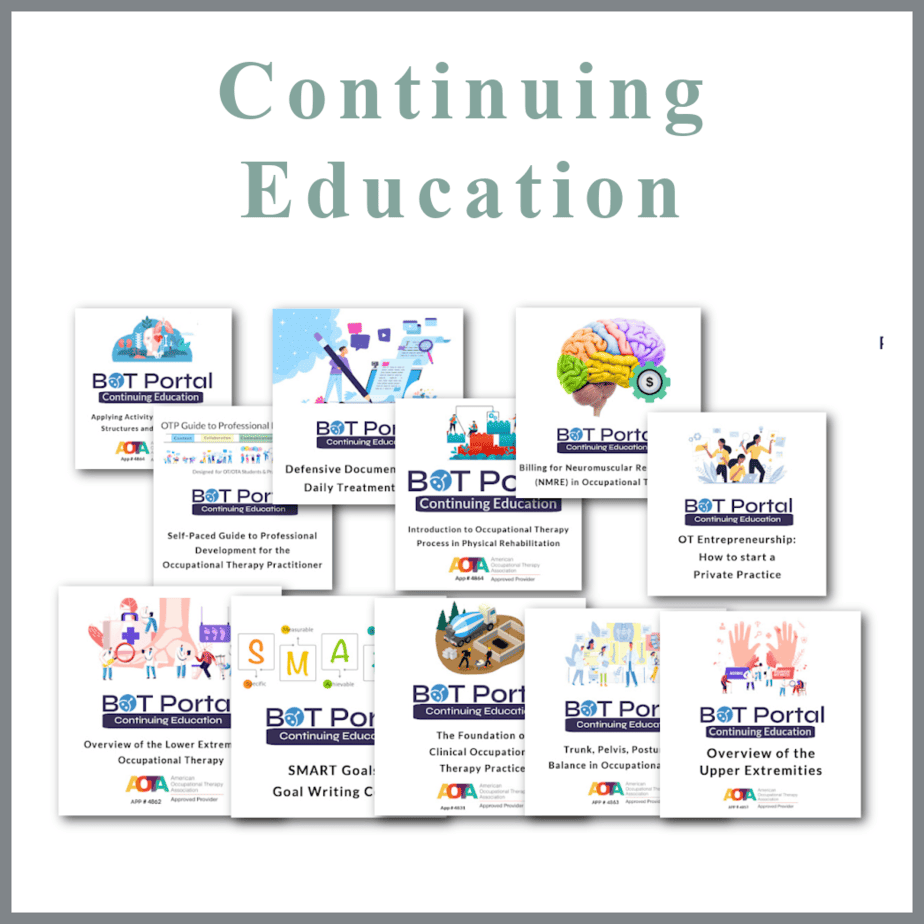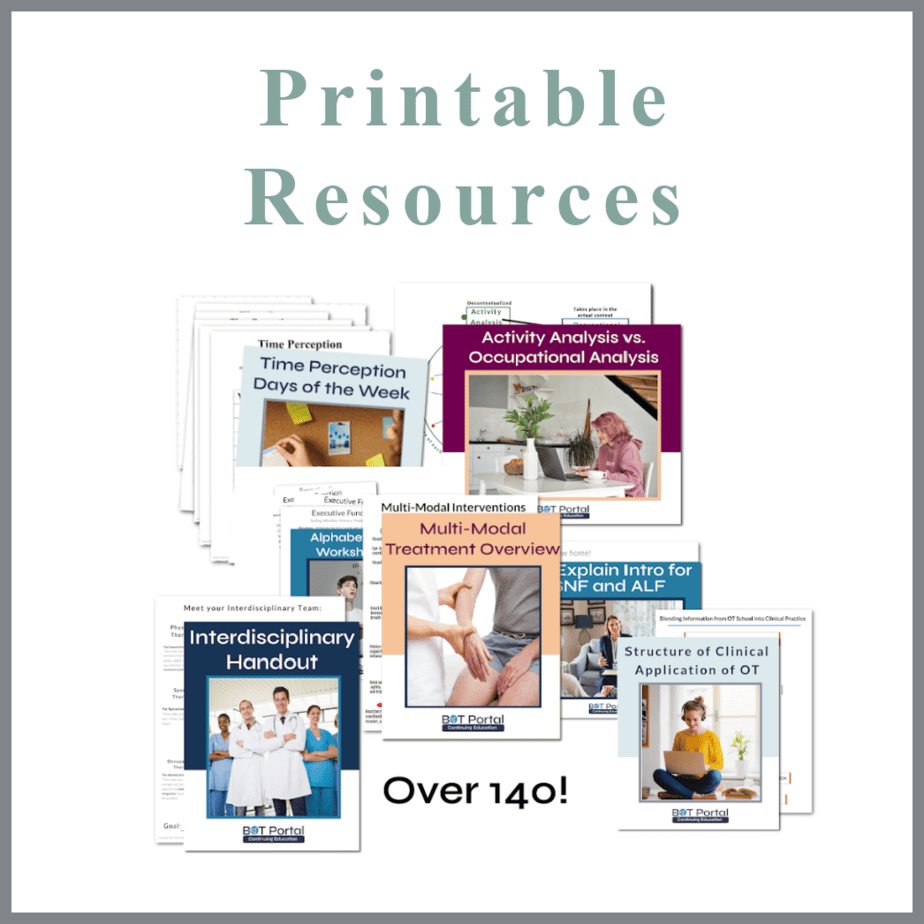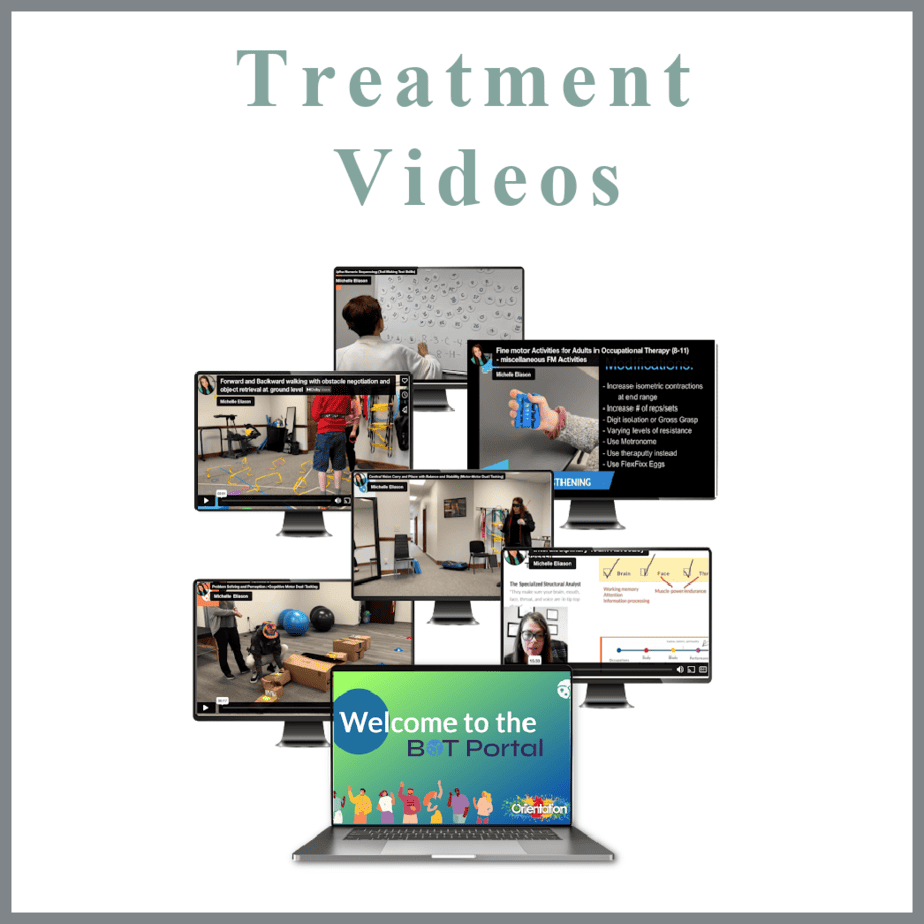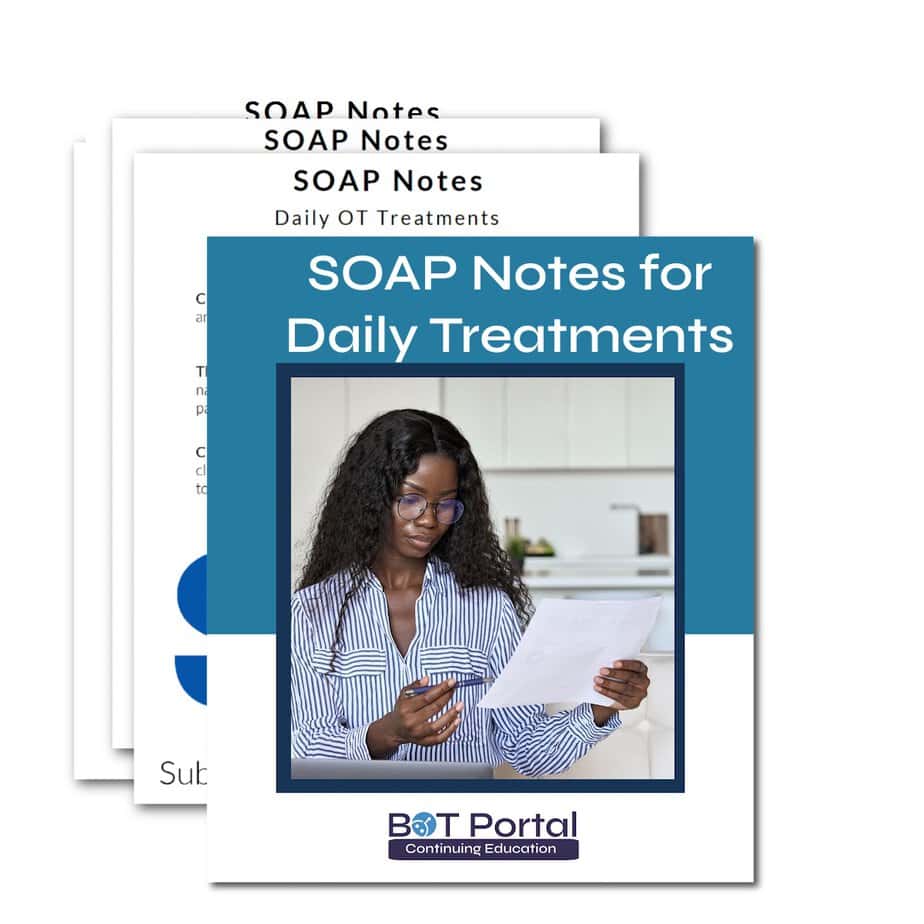SOAP Note for Occupational Therapy
{Daily Notes}
Stop feeling insecure and lost.
Don't wait for BURNOUT to consume your life because there just isn't enough time to search for evidence-based occupational therapy resources and training for daily clinical treatments.
Join the BOT Portal for occupational therapy resources and receive 24/7 access to the highest quality resources designed by an experienced therapist speciically for busy, motivated, and passionate therapists and therapy assistants.




Membership Perks
Two Membership Options!
Your investment gives you resources to save you stress, self-doubt, and burnout as you become a confident and competent practitioner who can stand up for your professional point of view and scope of practice.
SOAP Notes for Occupational Therapy daily treatment notes are specific to the daily interventions you perform as an occupational therapy practitioner. Depending on the setting you are in and the electronic medical records system they are using for documentation, the format of your SOAP daily treatment note may be different—but the general execution should remain the same.
Real Talk for OT Practice: If you are a student or a new grad, you will see occupational therapy practitioners who have been practicing for a little while writing very vague notes! Most times, this is because they are under a lot of pressure for productivity AND they don’t know the true weight of what they are writing. Your documentation matters! If you are an OT business owner, your documentation matters EVEN MORE! You see, people read your notes despite what people believe, and when they read YOUR notes, you better be ready to defend why you are qualified to provide medical services! #defensivedocumentation in daily notes is imperative as a form of passive advocacy for the occupational therapy profession.
General Guidelines
S = Subjective
O = Objective
A = Assessment
P = Plan
S
The subjective section of a daily treatment SOAP is Qualitative data from your patient/client. This section allows us to remain client-centered and observe client personal factors that may impact the current of future sessions. Based on this information we adapt our daily treatment plan or, if significant, actually alter our plan of care continuum all-together.
- What is going on with the client?
- What did they say?
- What are they feeling?
- Upcoming appointments?
- Did the caregiver mention anything?
- How do they ‘present’ or how do they ‘look’ at the start of the session? Any notable difference in how they walk in? Any new contusions (bruises) observed? Always comment on the presentation, but never add your own interpretation!
O
This is the objective and quantifiable data that you must include for insurance and payor justification as well as to provide evidence that your skilled intervention is necessary for the betterment and healing of your patient. These exercises and activities you use should be related to the plan of care continuum based on their diagnosis and should be working towards the achievement of the short term and long term goals set in your occupational therapy evaluation (plan of care continuum).
- Specific exercises/activities/interventions. Be specific! Tell what the exercise is working on using activity analysis and why you should be the one doing it vs. an activity leader.
- Why is that specific activity skilled and what is the clinical rationale for the treatment? How any repetitions and sets? What is it working on. If you are writing defensively, use language from the OTPF, current research, and, of course, activity analysis in your note!
- How did the patient respond? If you educated the client, how do you know the patient understood what was explained?
- Finally, how did the patient do with the activity and how did the patient present or look post-activity. Was the activity terminated due to shortness of breath (SOB) or early-onset of fatigue? What did you do about that? Remember that this section does not have feelings or interpretation!! This is the data. This is rigid, black and white information.
Again, YOU ARE NOTE COMPARING PAST AND PRESENT PERFORMANCE in your the objective portion of your daily treatment note! This is JUST daily performance. This comparison should placed in the “assessment” section if there is something of notable mention so that the progressive change can be noted easily SOAP for occupational therapy progress notes. Remember the assessment section is the place where a clinician INTERPRETS AND COMPARES data using a skilled lens. Subject and Objective is client only.
A
The assessment section of a daily treatment SOAP is the combination and interpretation of the client-driven Quantitative (subjective) and Qualitative (objective) data from your patient/client. This is the ONLY part of your treatment note that you include your interpretation based on research, clinical judgment, and experience. This is where you look at the parts compared to the big picture and you bring it all together for the reader. THIS section is where you create the medical and social narrative of your client!
What are some things to consider?
- How did the subjective information affect the objective elements of the activity? Did they hinder or improve the therapeutic potential of your patient for your treatment session?
- Based on the information you interpreted today, is your patient currently have a forward trajectory toward the goals in the initial plan of care?
- What should the doctor know about the treatment? What should another OT know about your patient and plan of care continuum if they need to take over your patient or caseload?
- Finally, why should this person continue to have skilled services through Occupational Therapy? If they shouldn’t, why not?
Be specific with your rationale and reasoning for continued services based on DAILY support!
P
If you will be continuing the POC, what will you work on in the next daily treatment?


